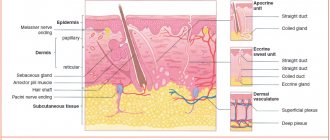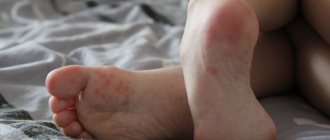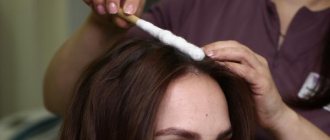Getting enough vitamin A is very important for healthy skin. It has a beneficial effect on epithelial tissue, supporting and restoring them.
A lack of vitamin A can lead to dry, rough skin.1
To remove rough skin from your heels, use a special scraper, and also add foods containing vitamin A to your diet.
Where is vitamin A found?
Vitamin A is found in carrots, egg yolks, pears, spinach, pumpkin and oranges. Liver is another food rich in vitamin A.1
Calcium and vitamin D
Consuming enough calcium and vitamin D is important for maintaining strong bones.
Vitamin D helps the body absorb calcium. If you don't get enough of these vitamins, over time your bones become thin and brittle (osteoporosis).
vitamin D. Also, a lack of the necessary elements can cause muscle spasms, cramps, discomfort and pain in the feet.2
Besides being good for your bones, calcium and vitamin D are also good for your skin.
Calcium in the epidermis (outer layer of skin) helps the body determine how quickly new skin cells are created to replace old ones. Thin, dry, and hard skin may appear on the legs if there is a lack of calcium in the body.3
If you are still faced with the problem of rough skin on your feet, then try making softening foot baths. After the procedure, use a Scholl electric file to remove rough skin and calluses. Don't forget to also apply cream to soften your feet.
Where are calcium and vitamin D found?
- Calcium is found in foods such as milk, cheese, and yogurt.4 Yogurt is often high in calcium and vitamin D. Calcium can also be found in vegetables (such as broccoli), grains, and fruits. Manufacturers add additional calcium to some products, so always check the label (for example, corn flake breakfast cereals).4
- Vitamin D is found in fish: especially salmon, tuna and sardines. You can also get calcium from egg yolk and beef liver, but in smaller quantities.4
How to get rid of the problem
Skin treatment
If the cracks in your heels are too severe and you cannot cope with them on your own, it is better to contact an experienced podiatrist. To determine whether you really are a carrier of the fungus, you will need to undergo a series of tests. After this, your doctor will prescribe you an antifungal agent for external use. In addition, to completely get rid of the disease, it is necessary not only to smear the feet with cream, but to treat the disease systemically, in particular - take antifungal drugs orally.
Peeling for feet
In Asian countries, acid peeling of the skin of the feet has been a common form of care for decades. In recent years, this practice has become no less popular in the West. The best option is special socks for peeling, soaked in acid in the required concentration. You just need to put them on for 2-3 hours, then rinse your feet with warm water. After 4-7 days, the skin of the feet will begin to actively peel off. If the condition of the heels was too advanced, exfoliation can be especially large-scale: the skin will come off in large layers. The main advantage of such peeling is absolute safety, since the procedure does not affect living skin. Of course, during the period of peeling you need to take care of the aesthetic side of the issue, since wearing open shoes or walking barefoot (on the beach, in the pool) is unlikely to work. Foot peeling can be performed every 3-4 months. In combination with competent intermediate care, you can completely forget about dry and cracked heels.
Professional pedicure
Modern beauty salons offer several types of pedicures. Not all of them benefit your feet in the long term. It is better to give preference to a hardware unedged pedicure. Of course, the qualifications of the master play an important role in this case.
Hardware pedicure is the best prevention of cracks
Hardware pedicure is performed using a grinding machine, and cutters with varying degrees of abrasiveness are used for different surfaces. To perform a pedicure correctly, the master must not only choose the right cutter, but also take into account the angle at which the device is held, as well as the intensity and duration of treatment
Only compliance with all these conditions allows you to obtain perfectly smooth skin of the feet, without redness, microtraumas and cuts.
An ideal combination of hardware pedicure with spa treatments: softening baths, scrub, nourishing foot masks
In case of excessive dryness and a tendency to cracks, paraffin baths with the addition of aromatic oils will not be superfluous. They intensively nourish and soften the skin of the feet, and at the same time have a prolonged effect. By the way, you can carry out a similar procedure at home: everything you need for this is sold in professional cosmetics stores
Home care to prevent cracks
Therapeutic and professional procedures are only one of the components of complex therapy to get rid of cracked heels. Regular home care is an equally important condition for solving the problem
If painful cracks have formed on your heels, which can sometimes even bleed, and you cannot visit a doctor or pedicurist, you can take emergency measures. First of all, cut off the rough skin around the wound a little. Don't be too zealous so as not to aggravate the situation. Be sure to do this on dry skin so as not to injure your heels even more. Rinse your feet with warm water. Treat the cracks with an antiseptic solution. Apply ointment to the wounds that accelerates healing and tissue regeneration “D Panthenol”, “Bepanten”, “Flexitol”, “Methyluracil”
Apply nourishing cream to your heels every evening. Give preference to products with vitamin D and urea: they perfectly soften the skin of the feet
Features of the heel area
The heel bone is the largest and strongest bone in the foot. During the day, it experiences enormous loads, as it is the main point of support when walking, running, or standing quietly. A powerful Achilles tendon is attached to the back surface of the heel bone, and a strong and wide plantar aponeurosis is attached to the bottom. More than a dozen tendons and ligaments closely touch and attach to the heel area.
The bone is protected by a thick layer of fatty tissue and strong skin. Fat under the heel is “packed” into round granules for greater durability and shock absorption. The thick leather sole has 5 layers and is thick to counteract adverse factors. The natural mobility of the joints of the foot, especially the vibrations of the longitudinal arch and the heel bone itself, also helps to absorb shock loads.
The most common causes of pain
Acute and chronic pain may occur in the heel area and may be caused by illness or injury. In this article we will pay attention to chronic pathology, since the issue of fractures and bruises is a separate complex topic. Chronic or acute non-traumatic pain most often occurs due to reasons such as:
- plantar fasciitis,
- achilles bursitis,
- Haglund's disease
- heel stress fracture,
- tunnel syndrome (pinched nerve of the foot),
- degeneration of the fat pad of the foot,
- arthrosis and arthritis of the foot joints.
If your heel hurts in the back, the most likely cause is damage or overuse of the Achilles tendon. This form of inflammation can occur both in athletes and people not exposed to physical activity. In this case, the pain may intensify when trying to rise on your toes after a long walk. The pathology is often accompanied by moderate swelling on the sides of the tendon; the intensity of the pain ranges from sharp and piercing to painfully aching.
The cause of pain on the lower surface of the heel is often a microtear and inflammation of the plantar aponeurosis. Patients often think that the pain is caused by a heel spur found on an x-ray, but this bone spike is only a sign of overload of the aponeurosis. The immediate causes of plantar fasciitis are foot deformities (flat feet, cavus foot), decreased elasticity of ligaments and tendons, and sports overload.
Other possible causes of pain are somewhat less common, but still quite common. Among the sources of inflammation there can be both completely harmless and quite dangerous processes. Therefore, if there are any signs of foot problems, you should contact a specialist - an orthopedic doctor, a surgeon or your family doctor.
How NOT to treat heel pain
Before considering the important aspects of treatment, I would like to dwell on what you definitely should not do.
The peculiarities of the fat pad and the skin of the heel exclude the effective action of any ointments or gels: they simply cannot reach the required depth. Therefore, local use of anti-inflammatory or other agents has extremely little effect. If the problem exists for a long time, you should not use anti-inflammatory drugs orally - there is a risk of developing peptic ulcers and drug-induced kidney inflammation.
Blockades with steroids are extremely undesirable. In addition to the fact that due to the density of the skin and fat of the heel, the injection itself is extremely painful, there is a high risk of dissolving the fatty tissue. In this case, the intensity of pain will increase many times, and completely adequate treatment in this case has not yet been developed.
Surgery is also dangerous. It is often prescribed after a long-term ineffective course of conservative treatment, but even the attending physician is not always able to accurately explain the benefits of surgery. Surgery only manages to destroy the nerves that transmit pain, but they soon “grow back.” Any attempts to remove a bone spine or cut the aponeurosis or Achilles tendon in the future can lead to serious complications.
Shoemaker tips
To wear shoes without damaging the product, you need to follow the recommendations of professionals:
Regardless of which product you choose, you should make sure it is safe. To do this, a small amount of the substance is applied to an inconspicuous area of the product. The procedure is allowed only if there are no negative changes. It is permissible to use special products only when stretching natural leather. The artificial material will deteriorate under their influence. Patent leather shoes should not be doused with boiling water or placed in the freezer. When using a hair dryer, it is recommended to cover the material with a damp cloth.
Due to this, it is possible to prevent the material from drying out. When using a hammer to soften it, it is important not to overdo it. Rigidity must be maintained, otherwise the shoes will become shapeless and even more uncomfortable.
The best and safest way to solve the problem is to seek help from professionals. An experienced shoemaker will be able to do the job efficiently without harming the material. It has all the necessary accessories to soften the backdrop.
What to do?
Have you noticed that your child's feet are flaky? Don't rush to the moms' forum for advice. If the condition does not improve after using moisturizing baby cream, consult a doctor. Parents' independent conclusions about the cause of skin changes are often erroneous. And lost time and improper treatment only worsen the situation, leading to cracks and infection. Therefore, be sure to consult a dermatologist.
To prevent peeling, make sure your child has:
- complete balanced nutrition;
- moisturizing foot cream with natural composition;
- strong immunity;
- proper foot hygiene;
- comfortable, natural shoes.
To monitor the condition and prevent foot diseases, we recommend that you and your child undergo periodic examinations by a podiatrist and undergo medical pedicures.
0 0
The best ointments for cracked heels
We suggest making ointments for cracks with your own hands. Such remedies will help get rid of the problem for a long time.
Glycerin ointment.
To prepare it, prepare:
- 100 g – olive oil;
- 1 tbsp – beeswax;
- 1 tsp – glycerin;
- 1 tsp – sea buckthorn oil.
Heat olive oil to 40 degrees. Dissolve the wax in it and add the remaining ingredients. Stir until smooth, transfer to a small container and store in the refrigerator. This ointment is used after steaming and removing the stratum corneum, at night.
Badger fat ointment
Prepare the ingredients for cooking:
- 50 ml – badger fat;
- 1 tsp – calendula (crushed flowers);
- 1 tsp – chopped celandine herb.
Melt the badger fat in a steam bath. Cover the herbs with boiling water and leave for 1 minute to steam. Place the swollen mass in melted fat and cook for 30 minutes. Do not allow the mixture to boil. Store the resulting ointment in the refrigerator and use overnight.
Stages of foot skin care
The skin of this part of the body, like any other, requires an integrated approach. Only in this case can you expect a quick and good result. Here are the most important parts that make up the recommended care program:
- Cleansing. It all starts with him. It is useless to apply various cosmetics to dirty skin; it will not give the desired effect. You should at least wash it with soap, or you can make a special bath. Cleaning with a scrub is recommended once a week. To remove old skin, it is better to use a pumice stone or a brush;
- Hydration. At this stage, all kinds of moisturizing creams are used, which are widely available in stores. If necessary, they can be easily replaced with any vegetable oil or vitamins A and E in liquid form;
- Nutrition. Ready-made store-bought products are also perfect for these purposes, or you can also use proven folk recipes.
All procedures are usually carried out in the evening shortly before bedtime, so that the skin can rest and absorb all the beneficial substances overnight.











